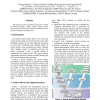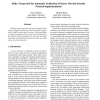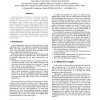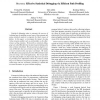ICSE
2009
IEEE-ACM
14 years 26 days ago
2009
IEEE-ACM
Architectural knowledge has been recognized by the software architecture community as a self-contained research area in software architecture, and brought along some promising res...
ICSE
2009
IEEE-ACM
14 years 26 days ago
2009
IEEE-ACM
Most system level software is written in C and executed concurrently. Because such software is often critical for system reliability, it is an ideal target for formal verification...
ICSE
2009
IEEE-ACM
14 years 26 days ago
2009
IEEE-ACM
Backtracking is necessary when design alternatives are explored or dead ends are reached. Unfortunately, current approaches support chronological backtracking only (undo or versio...
ICSE
2009
IEEE-ACM
14 years 26 days ago
2009
IEEE-ACM
This paper presents experiments realized by Airbus on model checking a safety critical system, lessons learnt and ways forward to extend the industrial use of formal verification ...
ICSE
2009
IEEE-ACM
14 years 26 days ago
2009
IEEE-ACM
Verifying security properties of protocols requires developers to manually create protocol-specific intruder models, which could be tedious and error prone. We present Slede, a ve...
ICSE
2009
IEEE-ACM
14 years 26 days ago
2009
IEEE-ACM
Collaborative software development is nowadays inconceivable without optimistic version control systems (VCSs). Without such systems the parallel modification of one artifact by m...
ICSE
2009
IEEE-ACM
14 years 26 days ago
2009
IEEE-ACM
For ages we used our ears side by side with our ophthalmic stimuli to gather additional information, leading and supporting us in our visualization. Nowadays numerous software vis...
ICSE
2009
IEEE-ACM
14 years 26 days ago
2009
IEEE-ACM
Interactive tutorials, like Eclipse's cheat sheets, are good for novice programmers to learn how to perform tasks (e.g., checking out a CVS project) in an Integrated Developm...
ICSE
2009
IEEE-ACM
14 years 26 days ago
2009
IEEE-ACM
Statistical debugging aims to automate the process of isolating bugs by profiling several runs of the program and using statistical analysis to pinpoint the likely causes of failu...
ICSE
2009
IEEE-ACM
14 years 26 days ago
2009
IEEE-ACM
Configurable software lets users customize applications in many ways, and is becoming increasingly prevalent. Regression testing is an important but expensive way to build confide...




